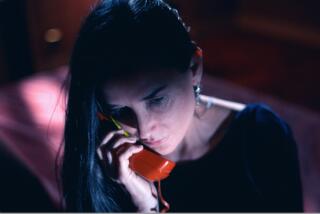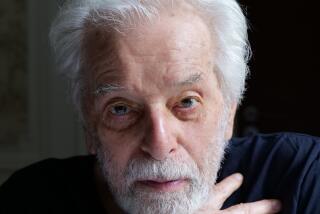Cannes Film Festival: Michel Hazanavicius takes a gamble on silent film
Reporting from Cannes, France — “The Artist” manages the seemingly impossible: It’s a new silent film that pays thoughtful tribute to the traditions of the past while creating great fun for modern audiences. Which is just what French director Michel Hazanavicius had in mind.
“A silent film is a very special experience. … It’s not intellectual, it’s emotional. You take it in the way you take in music,” Hazanavicius explains, tired but still engaging at the end of a day spent coping with a deluge of media requests. “There are times when language reduces communication, when you feel you are losing something when you start talking.”
“It is very difficult,” he adds, “to say important things with only words. Gestures, looks, silences are also important. We have this when we communicate with our children when they are very young. It’s the same with the intimacy of a couple. And when a person is dying, you don’t speak — you hold their hand.”
Hazanavicius set his film in Hollywood between 1927 and 1931, during the transition from silent film to sound, because he thought it would help audiences feel that a silent version of the story made sense. The story follows a silent film star whose career goes into decline when the talkies are invented.
But the film isn’t set only in Hollywood. Hazanavicius, a director well known in France for secret agent spoofs like “OSS 117: Cairo Nest of Spies,” brought his cinematographer and his regular stars, Jean Dujardin and Bérénice Bejo, all the way to Los Angeles to shoot the movie in the physical space where it happened.
He gave American actors including John Goodman and James Cromwell supporting roles, and filmed at “vintage” locations all over Los Angeles, including Mary Pickford’s house on Fremont Place, the Wilshire-Ebell Theatre, the Bradbury Building, and the backlots at Paramount, Warner Bros. and Red Studio in the heart of old Hollywood.
“The movie is much better in Hollywood. It was very moving for us to go to all these real places,” he explained. “American people look like American people, the way Bulgarians look like Bulgarians, so it was important to go there.” The version of the film shown at Cannes has English intertitles because “since the action takes place in Hollywood, it would seem wrong if the people spoke French.”
Hazanavicius says the crew he hired in the U.S. was “astonished” by his decision to film in L.A. “It was very strange for them to have French people come to Hollywood to tell their own story,” he says. “They were very moved by that. They said, ‘We could never do [a film like] this in the United States.’”
For Dujardin and Bejo, who worked with him on two previous films, doing a silent film “was like being kids, everything was new for them. Usually when we do a movie, we ask them not to step on each other’s lines. Here it didn’t matter. Usually, it is like a church on the set. We didn’t do that, we put some music on during the shooting. It made things much more natural for them.”
Hazanavicius had cinematographer Guillaume Schiffman shoot at 22 frames per second instead of the now-standard 24, to give the actors “a little flavor of the ‘20s.” Though it has definite comic elements, “The Artist” also has a dramatic focus. As a director known for spy spoof movies, Hazanavicius has said one reason he wanted to do this film was that he didn’t want to “always be the guy who makes you laugh at the dinner table.”
“In France, if you do a comedy, everyone wants you to make comedies,” he adds. “‘Why does he want to be a serious guy?’ They have difficulty accepting that you want to do something else.”
So, will he do another silent film? Hazanavicius shrugs. “When you do something good, people want you to do it one more time. Maybe later, but for now it’s a one shot.”
As they say in France, c’est dommage. It’s a shame.
More to Read
The biggest entertainment stories
Get our big stories about Hollywood, film, television, music, arts, culture and more right in your inbox as soon as they publish.
You may occasionally receive promotional content from the Los Angeles Times.











